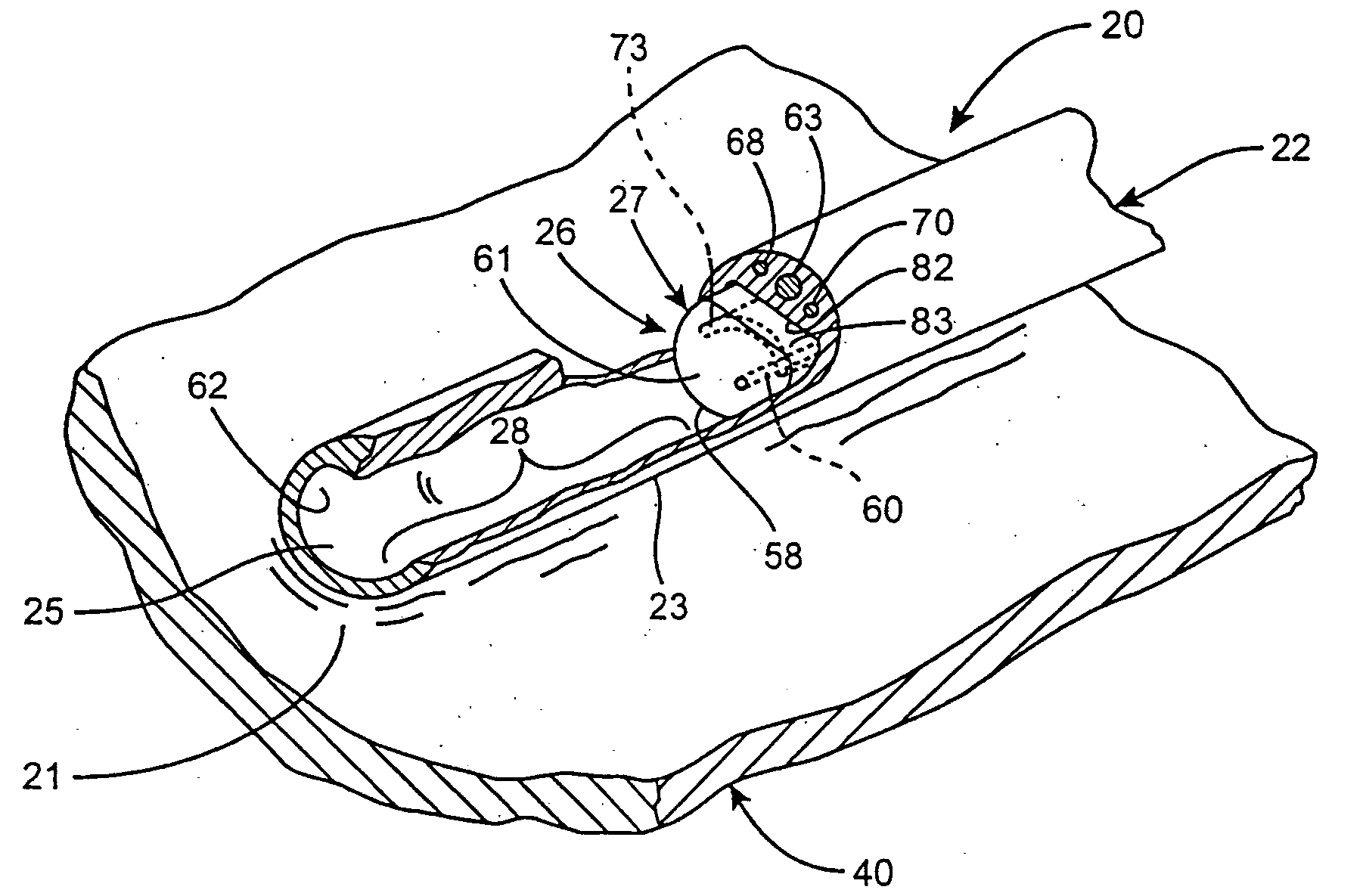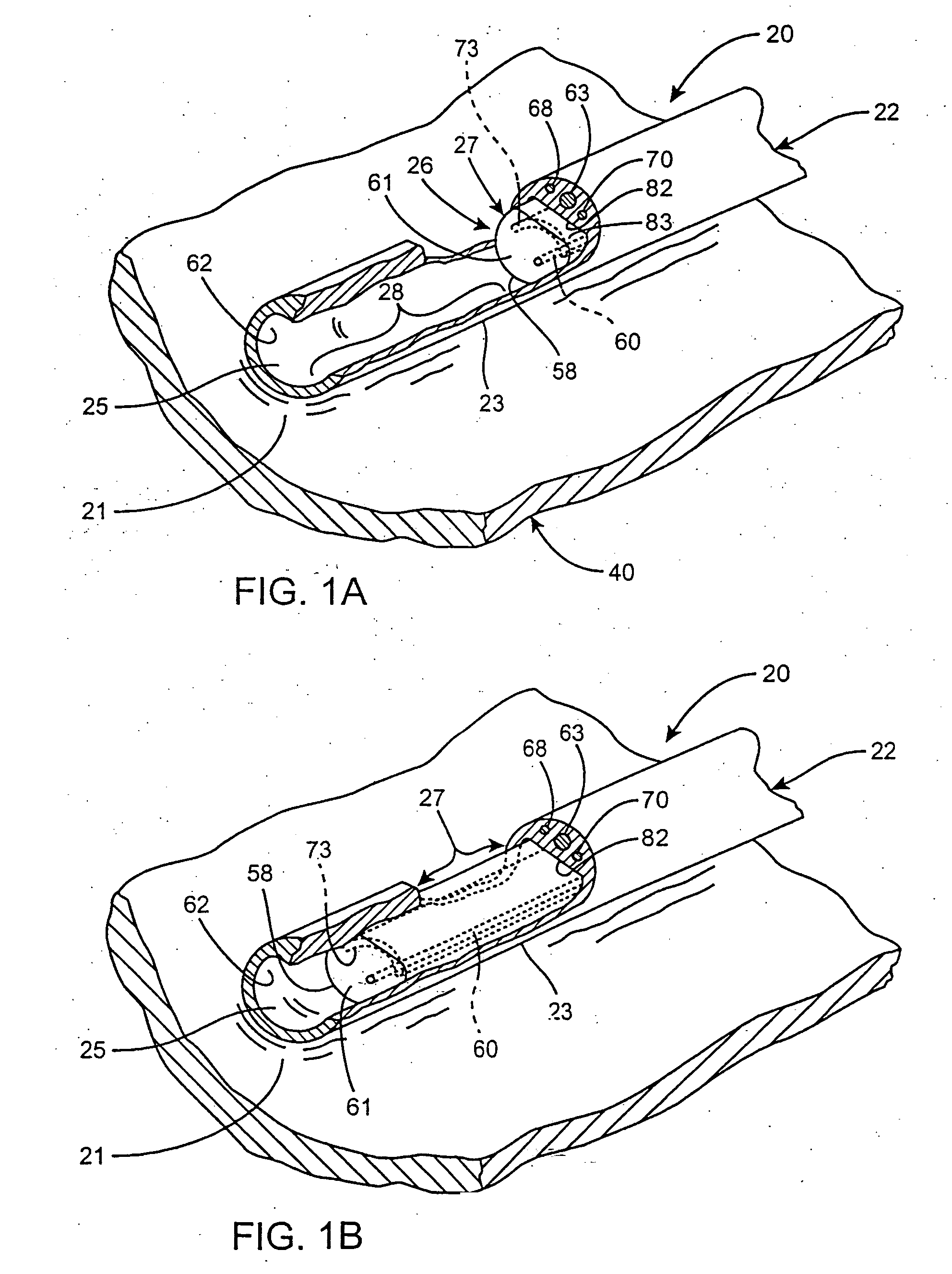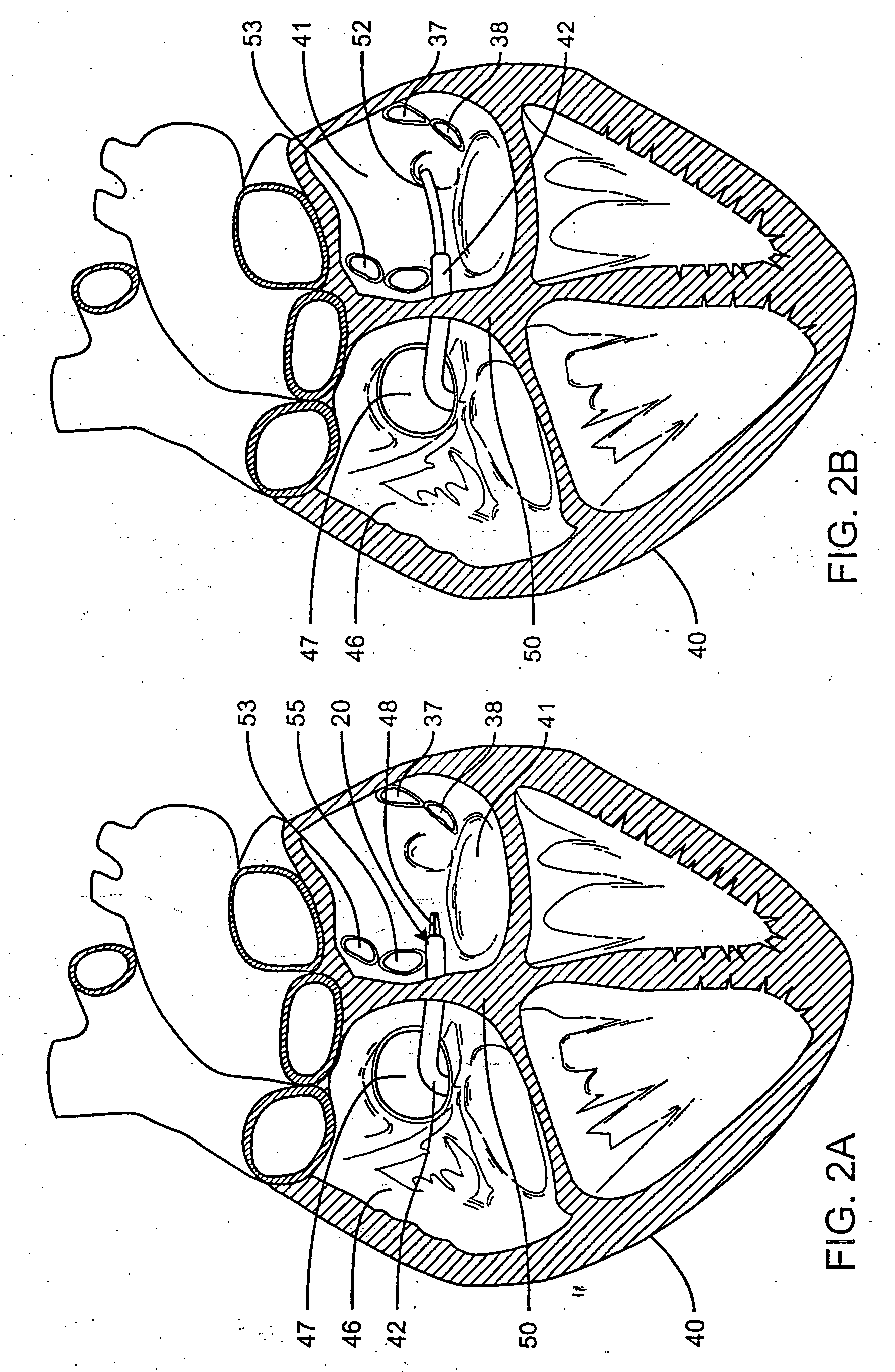Method of positioning a medical instrument
a technology of medical instruments and positioning methods, applied in the field of pre-formed guide devices, can solve the problems of traumatic operation procedures, unable to restore normal cardiac hemodynamics, and unable to alleviate the vulnerability of patients,
- Summary
- Abstract
- Description
- Claims
- Application Information
AI Technical Summary
Benefits of technology
Problems solved by technology
Method used
Image
Examples
Embodiment Construction
[0058] While the present invention will be described with reference to a few specific embodiments, the description is illustrative of the invention and is not to be construed as limiting the invention. Various modifications to the present invention can be made to the preferred embodiments by those skilled in the art without departing from the true spirit and scope of the invention as defined by the appended claims. It will be noted here that for a better understanding, like components are designated by like reference numerals throughout the various Figures.
[0059] Turning generally now to FIGS. 1A-2D, an ablation system, generally designated 20, is provided for transmurally ablating a targeted tissue 21 of biological tissue. The system 20 is particularly suitable to ablate the epicardial or endocardial tissue 40 of the heart, and more particularly, to treat medically refractory atrial fibrillation of the Heart. The ablation system 20 for ablating tissue within a body of a patient in...
PUM
 Login to View More
Login to View More Abstract
Description
Claims
Application Information
 Login to View More
Login to View More - R&D
- Intellectual Property
- Life Sciences
- Materials
- Tech Scout
- Unparalleled Data Quality
- Higher Quality Content
- 60% Fewer Hallucinations
Browse by: Latest US Patents, China's latest patents, Technical Efficacy Thesaurus, Application Domain, Technology Topic, Popular Technical Reports.
© 2025 PatSnap. All rights reserved.Legal|Privacy policy|Modern Slavery Act Transparency Statement|Sitemap|About US| Contact US: help@patsnap.com



